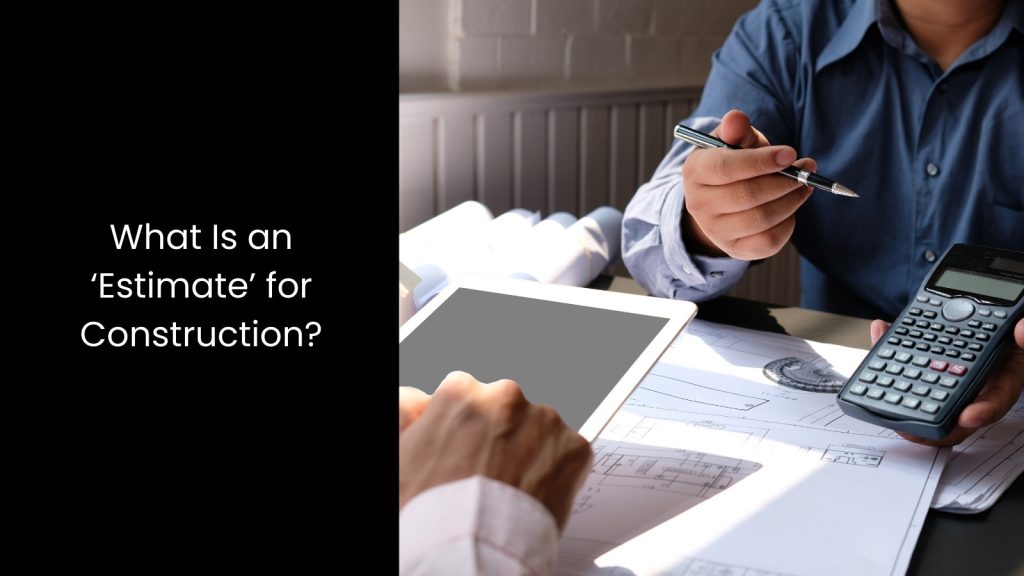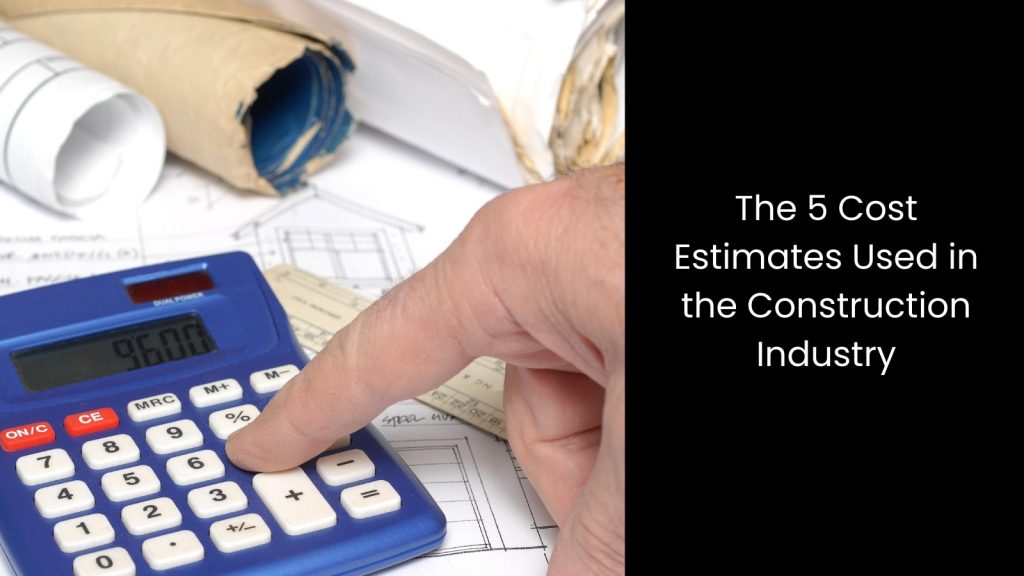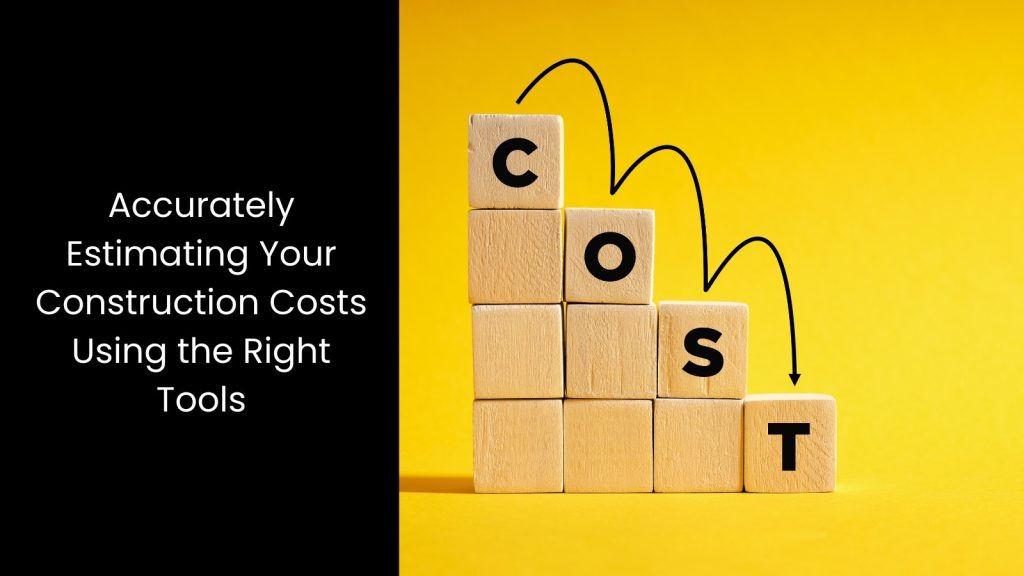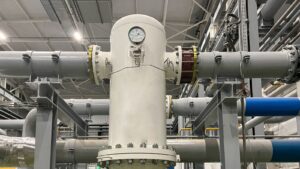If we look into the construction industry in Australia, it is visible that New South Wales, Victoria, and Queensland have become the hub spots for the country’s housing construction projects. That said, cost estimation for such projects plays a major role in ensuring their success and financial viability. According to various studies, many construction projects worldwide tend to exceed their initial budgets, highlighting the critical need for accurate cost assessment methods. In this regard, Australia is no exception. With the construction sector experiencing rapid growth and increasing project complexities, understanding the various cost estimation techniques becomes essential for stakeholders.
This is why we look into the main 5 cost estimates that can be utilised in the construction industry while exploring their characteristics.
This is why we look into the main 5 cost estimates that can be utilised in the construction industry while exploring their characteristics.
What Is an ‘Estimate’ for Construction?

- The Estimate for construction is calculating the total expenses required to complete a construction project. This estimate includes everything from labour and materials to equipment, permits, and overhead costs.
- The goal of construction cost estimating is to provide an accurate projection of how much money a project will require, helping project owners and contractors make informed decisions before work begins.
- Without proper cost estimation, projects can run over budget, causing delays, financial strain, or even project abandonment.
- The estimating process helps ensure that projects stay within budget, proceed efficiently, and meet financial targets. Construction cost estimating truly helps align project goals with financial realities and gives stakeholders the tools they need to plan effectively and make sound business decisions.
The 5 Cost Estimates Used in the Construction Industry

Preliminary Estimate (Rough Order of Magnitude)
In construction, the preliminary estimate, also known as the Rough Order of Magnitude (ROM), serves as an early attempt to determine the overall cost of a project.
At this stage, estimators work with minimal details, usually focusing on the size and general scope of the project rather than specific designs or materials. This type of estimate provides a broad cost range, giving stakeholders a rough idea of what the project might cost.
Since the information available is limited, the accuracy of the estimate can vary. It typically falls within a range of 20–30% above or below the final cost. This means the actual project cost could be higher or lower than the preliminary estimate, depending on how the project evolves.
At this stage, estimators work with minimal details, usually focusing on the size and general scope of the project rather than specific designs or materials. This type of estimate provides a broad cost range, giving stakeholders a rough idea of what the project might cost.
Since the information available is limited, the accuracy of the estimate can vary. It typically falls within a range of 20–30% above or below the final cost. This means the actual project cost could be higher or lower than the preliminary estimate, depending on how the project evolves.
Detailed Estimate
This is a comprehensive calculation of all the costs associated with a project.
This type of estimate comes after the project’s design and specifications are mostly finalised. This means there is much more information available to accurately forecast expenses.
The detailed estimate breaks down every aspect of the project, including the costs of materials, labour, equipment, and any overhead expenses such as permits, insurance, or administrative fees. It offers a clear and thorough view of what each element of the project will cost, allowing stakeholders to see exactly where their money will be spent. This estimate is much more precise than earlier estimates, with an accuracy range usually within 5-10% of the actual final cost.
Because of its high level of detail, this estimate plays a key role in creating the project’s final budget. It allows project owners to secure accurate funding and helps contractors submit bids with confidence, knowing that they have accounted for all necessary costs.
This type of estimate comes after the project’s design and specifications are mostly finalised. This means there is much more information available to accurately forecast expenses.
The detailed estimate breaks down every aspect of the project, including the costs of materials, labour, equipment, and any overhead expenses such as permits, insurance, or administrative fees. It offers a clear and thorough view of what each element of the project will cost, allowing stakeholders to see exactly where their money will be spent. This estimate is much more precise than earlier estimates, with an accuracy range usually within 5-10% of the actual final cost.
Because of its high level of detail, this estimate plays a key role in creating the project’s final budget. It allows project owners to secure accurate funding and helps contractors submit bids with confidence, knowing that they have accounted for all necessary costs.
Quantity Takeoff Estimate
This focuses on calculating the exact amounts of materials and labour needed for a project in Australia. This process begins when a contractor closely examines architectural and engineering drawings to measure the specific quantities of materials, such as concrete, steel, wood, and other building components.
These detailed measurements ensure that the estimate reflects the actual materials required to complete the construction, avoiding guesswork.
Apart from that, labour costs are also included in the quantity takeoff, as estimators calculate how much work is needed and the number of workers required to finish various tasks. Since it can precisely measure these factors, the quantity takeoff forms the foundation for creating a more accurate and detailed estimate. It ensures that all cost calculations, from material prices to labour rates, are based on precise information rather than assumptions.
This type of estimate is critical for the construction industry in Australia because it helps prevent costly mistakes or underestimations that could lead to budget overruns later in the project.
These detailed measurements ensure that the estimate reflects the actual materials required to complete the construction, avoiding guesswork.
Apart from that, labour costs are also included in the quantity takeoff, as estimators calculate how much work is needed and the number of workers required to finish various tasks. Since it can precisely measure these factors, the quantity takeoff forms the foundation for creating a more accurate and detailed estimate. It ensures that all cost calculations, from material prices to labour rates, are based on precise information rather than assumptions.
This type of estimate is critical for the construction industry in Australia because it helps prevent costly mistakes or underestimations that could lead to budget overruns later in the project.
Bid Cost Estimate
This is a type of estimate that contractors submit when they propose to take on a project. But what is the difference?
This estimate outlines all the expected costs involved, including both direct and indirect expenses. Direct costs refer to materials, labour, and equipment required for the construction, while indirect costs might include things like administrative fees, permits, and site security.
In addition to these, contractors also factor in their profit margin, which is the amount they expect to earn for completing the project.
Since the bid estimate is essentially the contractor’s offer to the project owner, accuracy is extremely important.
The financial terms of the entire project are based on this bid, so any miscalculations can lead to problems like budget overruns or even disputes between the contractor and the owner. The bid estimate must cover all aspects of the project while staying competitive enough to win the contract.
This estimate gives the project owner a clear idea of how much the project will cost and allows them to compare different bids from various contractors to choose the best one.
This estimate outlines all the expected costs involved, including both direct and indirect expenses. Direct costs refer to materials, labour, and equipment required for the construction, while indirect costs might include things like administrative fees, permits, and site security.
In addition to these, contractors also factor in their profit margin, which is the amount they expect to earn for completing the project.
Since the bid estimate is essentially the contractor’s offer to the project owner, accuracy is extremely important.
The financial terms of the entire project are based on this bid, so any miscalculations can lead to problems like budget overruns or even disputes between the contractor and the owner. The bid estimate must cover all aspects of the project while staying competitive enough to win the contract.
This estimate gives the project owner a clear idea of how much the project will cost and allows them to compare different bids from various contractors to choose the best one.
Definitive Estimate
The definitive estimate is known as the most detailed and precise form of cost estimation in construction. This emerges after finalising the project’s plans and designs.
At this stage, estimators analyse every aspect of the project to develop a comprehensive assessment of costs. They include thorough calculations for materials, labour, equipment, and any other expenses that might arise throughout the construction process. This estimate goes beyond previous estimates by providing an in-depth breakdown, allowing stakeholders to see the financial implications of every component of the project.
The definitive estimate is important for setting the final project budget and ensuring that the allocated funds cover all anticipated costs. This estimate minimises the chances of unexpected expenses, making it a reliable guide for financial planning. Contractors and project owners use this estimate to align their expectations and secure financing, as it offers a nearly precise picture of what the project will entail financially.
Estimators gather detailed information from finalised drawings and specifications, ensuring that every cost is accounted for and validated. They also consider potential risks and any uncertainties that might impact the budget, allowing for contingency plans.
So, as you can see, the definitive estimate not only serves as a roadmap for the project but also acts as a benchmark against which actual costs can be measured throughout the construction process. When providing such a refined level of detail, this estimate enables better decision-making and enhances communication between all parties involved, from project managers to investors.
At this stage, estimators analyse every aspect of the project to develop a comprehensive assessment of costs. They include thorough calculations for materials, labour, equipment, and any other expenses that might arise throughout the construction process. This estimate goes beyond previous estimates by providing an in-depth breakdown, allowing stakeholders to see the financial implications of every component of the project.
The definitive estimate is important for setting the final project budget and ensuring that the allocated funds cover all anticipated costs. This estimate minimises the chances of unexpected expenses, making it a reliable guide for financial planning. Contractors and project owners use this estimate to align their expectations and secure financing, as it offers a nearly precise picture of what the project will entail financially.
Estimators gather detailed information from finalised drawings and specifications, ensuring that every cost is accounted for and validated. They also consider potential risks and any uncertainties that might impact the budget, allowing for contingency plans.
So, as you can see, the definitive estimate not only serves as a roadmap for the project but also acts as a benchmark against which actual costs can be measured throughout the construction process. When providing such a refined level of detail, this estimate enables better decision-making and enhances communication between all parties involved, from project managers to investors.
Accurately Estimating Your Construction Costs Using the Right Tools

Since you had a 360-degree view of the cost estimation variations in the construction landscape, you understand how complex it is to have an accurate estimation. If you do not execute these calculations correctly, your project will run out of budget before it comes to an end. This is where selecting a technological solution that incorporates predictive analytics and financial modelling is vital for precise construction cost estimation. These capabilities allow for a thorough understanding of project dynamics, enabling stakeholders to foresee financial implications and mitigate risks. If you opt to embrace these tools purchased from an industry expert, you can optimise your budgeting processes and drive project success more effectively.







